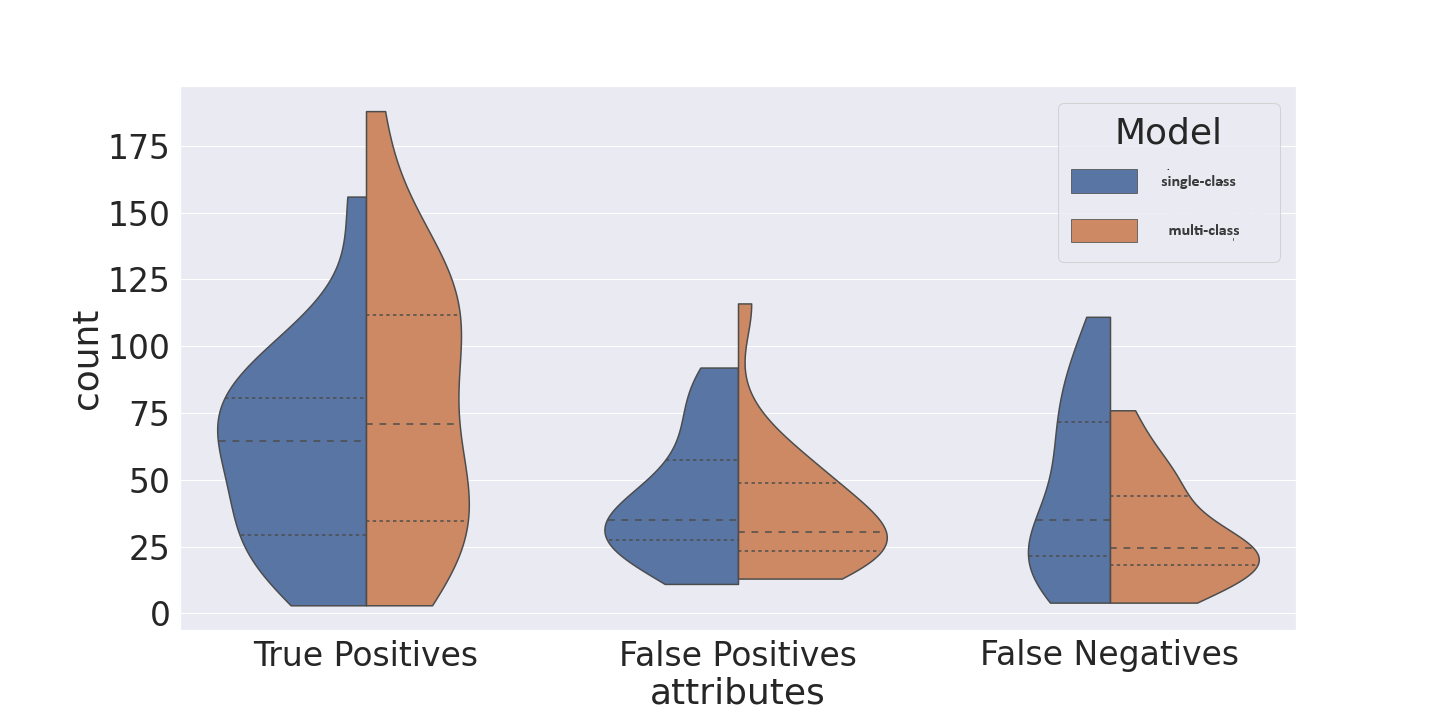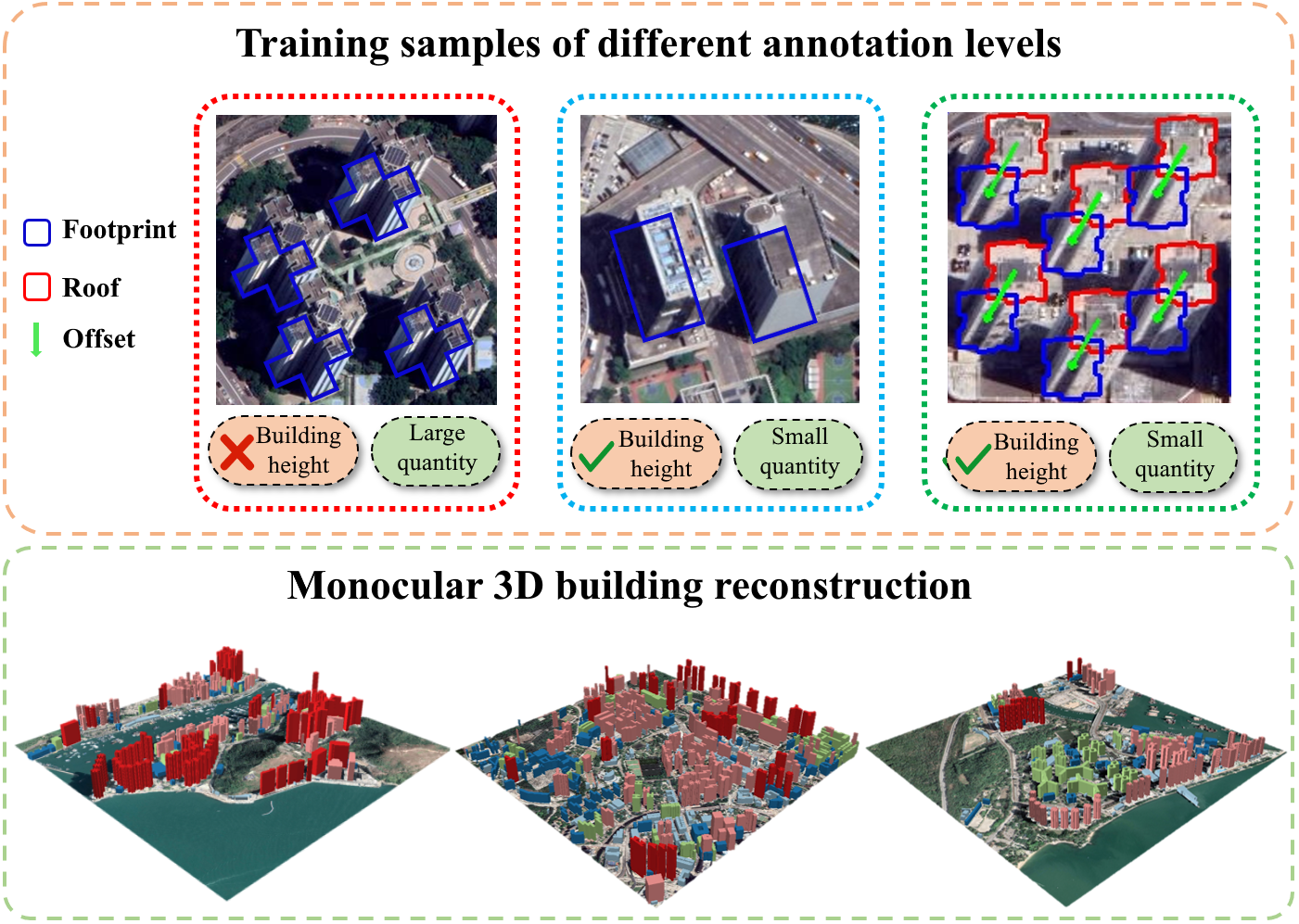Terrain-Informed Self-Supervised Learning: Enhancing Building Footprint Extraction from LiDAR Data with Limited Annotations
2311.01188

0
0
⛏️
Abstract
Estimating building footprint maps from geospatial data is of paramount importance in urban planning, development, disaster management, and various other applications. Deep learning methodologies have gained prominence in building segmentation maps, offering the promise of precise footprint extraction without extensive post-processing. However, these methods face challenges in generalization and label efficiency, particularly in remote sensing, where obtaining accurate labels can be both expensive and time-consuming. To address these challenges, we propose terrain-aware self-supervised learning, tailored to remote sensing, using digital elevation models from LiDAR data. We propose to learn a model to differentiate between bare Earth and superimposed structures enabling the network to implicitly learn domain-relevant features without the need for extensive pixel-level annotations. We test the effectiveness of our approach by evaluating building segmentation performance on test datasets with varying label fractions. Remarkably, with only 1% of the labels (equivalent to 25 labeled examples), our method improves over ImageNet pre-training, showing the advantage of leveraging unlabeled data for feature extraction in the domain of remote sensing. The performance improvement is more pronounced in few-shot scenarios and gradually closes the gap with ImageNet pre-training as the label fraction increases. We test on a dataset characterized by substantial distribution shifts and labeling errors to demonstrate the generalizability of our approach. When compared to other baselines, including ImageNet pretraining and more complex architectures, our approach consistently performs better, demonstrating the efficiency and effectiveness of self-supervised terrain-aware feature learning.
Create account to get full access
Overview
- Estimating building footprint maps from geospatial data is crucial for urban planning, development, disaster management, and other applications
- Deep learning methods offer precise building footprint extraction, but face challenges in generalization and label efficiency, especially in remote sensing
- The paper proposes a terrain-aware self-supervised learning approach to address these challenges, leveraging digital elevation models from LiDAR data
Plain English Explanation
The paper discusses a method for automatically mapping the outlines of buildings from satellite or aerial imagery, which is an important task for urban planning, disaster response, and other applications. Deep learning models have shown promise for this task, but they often struggle when there is limited labeled training data available, which can be a common issue in remote sensing projects.
To address this, the researchers propose a "self-supervised" approach that allows the model to learn useful features from the data without needing extensive manual labeling. The key idea is to have the model learn to distinguish between areas that are simply the bare ground versus areas where there are buildings or other structures on top of the ground. This terrain-aware learning allows the model to implicitly learn relevant features, without relying on detailed pixel-level labels of building outlines.
The researchers show that this self-supervised approach leads to better performance, especially when only a small fraction of the training data is manually labeled. This makes the method more practical for real-world remote sensing applications where obtaining high-quality labeled data can be time-consuming and expensive.
Technical Explanation
The paper proposes a terrain-aware self-supervised learning approach for building footprint extraction from remote sensing data. The key innovation is to leverage digital elevation models (DEMs) from LiDAR data to enable the model to learn to differentiate between bare Earth and superimposed structures, without requiring extensive pixel-level annotations of building footprints.
The authors design a self-supervised pretraining task where the model is trained to predict whether each pixel in an image corresponds to bare ground or a superimposed structure, based on the associated elevation information from the DEM. This allows the network to implicitly learn domain-relevant features that are useful for the downstream task of building segmentation, even with limited labeled data.
The authors evaluate their approach on building segmentation benchmarks, comparing to baselines like ImageNet pretraining. Remarkably, they find that with only 1% of the labels (equivalent to 25 labeled examples), their method outperforms ImageNet pretraining. This performance gap is most pronounced in few-shot scenarios and gradually closes as the label fraction increases.
The authors also test their approach on a dataset with substantial distribution shifts and label noise, demonstrating its generalization capabilities. Compared to other baselines, including more complex architectures, the proposed terrain-aware self-supervised learning consistently achieves the best performance, showcasing its efficiency and effectiveness for building footprint extraction in remote sensing applications.
Critical Analysis
The paper presents a compelling solution to the challenge of building footprint extraction from remote sensing data with limited labeled examples. The terrain-aware self-supervised pretraining approach is a clever way to leverage the underlying structure of the remote sensing data to improve model performance in a data-efficient manner.
One potential limitation is that the method relies on the availability of high-quality digital elevation models, which may not always be accessible, especially in developing regions. Additionally, the paper does not explore the sensitivity of the approach to the quality and resolution of the elevation data. Further research could investigate the robustness of the method to different DEM data sources and quality levels.
Another area for future work could be to explore ways to extend the self-supervised pretraining to other geospatial data modalities, such as multispectral imagery or radar data, to further improve the generalization capabilities of the approach. Bootstrapping approaches using unlabeled data could be a promising direction to explore.
Overall, the paper presents a novel and effective solution for building footprint extraction, with the potential to significantly reduce the reliance on costly and time-consuming manual annotation efforts in remote sensing applications.
Conclusion
The proposed terrain-aware self-supervised learning approach offers a practical and efficient solution for building footprint extraction from remote sensing data, particularly in scenarios with limited labeled examples. By leveraging digital elevation models to enable the model to learn domain-relevant features without extensive pixel-level annotations, the method demonstrates impressive performance improvements over standard baselines, especially in few-shot learning settings.
This work has important implications for a wide range of applications, from urban planning and development to disaster management and response. By reducing the need for manual labeling, the technique can help accelerate the process of creating accurate building footprint maps, which are crucial for informing decision-making and enabling more effective interventions. As the authors show, the approach also exhibits strong generalization capabilities, making it a promising candidate for deployment in diverse real-world remote sensing scenarios.
This summary was produced with help from an AI and may contain inaccuracies - check out the links to read the original source documents!
Related Papers
⛏️
Expediting Building Footprint Extraction from High-resolution Remote Sensing Images via progressive lenient supervision
Haonan Guo, Bo Du, Chen Wu, Xin Su, Liangpei Zhang

0
0
The efficacy of building footprint segmentation from remotely sensed images has been hindered by model transfer effectiveness. Many existing building segmentation methods were developed upon the encoder-decoder architecture of U-Net, in which the encoder is finetuned from the newly developed backbone networks that are pre-trained on ImageNet. However, the heavy computational burden of the existing decoder designs hampers the successful transfer of these modern encoder networks to remote sensing tasks. Even the widely-adopted deep supervision strategy fails to mitigate these challenges due to its invalid loss in hybrid regions where foreground and background pixels are intermixed. In this paper, we conduct a comprehensive evaluation of existing decoder network designs for building footprint segmentation and propose an efficient framework denoted as BFSeg to enhance learning efficiency and effectiveness. Specifically, a densely-connected coarse-to-fine feature fusion decoder network that facilitates easy and fast feature fusion across scales is proposed. Moreover, considering the invalidity of hybrid regions in the down-sampled ground truth during the deep supervision process, we present a lenient deep supervision and distillation strategy that enables the network to learn proper knowledge from deep supervision. Building upon these advancements, we have developed a new family of building segmentation networks, which consistently surpass prior works with outstanding performance and efficiency across a wide range of newly developed encoder networks.
4/11/2024

Automated National Urban Map Extraction
Hasan Nasrallah, Abed Ellatif Samhat, Cristiano Nattero, Ali J. Ghandour

0
0
Developing countries usually lack the proper governance means to generate and regularly update a national rooftop map. Using traditional photogrammetry and surveying methods to produce a building map at the federal level is costly and time consuming. Using earth observation and deep learning methods, we can bridge this gap and propose an automated pipeline to fetch such national urban maps. This paper aims to exploit the power of fully convolutional neural networks for multi-class buildings' instance segmentation to leverage high object-wise accuracy results. Buildings' instance segmentation from sub-meter high-resolution satellite images can be achieved with relatively high pixel-wise metric scores. We detail all engineering steps to replicate this work and ensure highly accurate results in dense and slum areas witnessed in regions that lack proper urban planning in the Global South. We applied a case study of the proposed pipeline to Lebanon and successfully produced the first comprehensive national building footprint map with approximately 1 Million units with an 84% accuracy. The proposed architecture relies on advanced augmentation techniques to overcome dataset scarcity, which is often the case in developing countries.
5/6/2024

Shelf-Supervised Multi-Modal Pre-Training for 3D Object Detection
Mehar Khurana, Neehar Peri, Deva Ramanan, James Hays

0
0
State-of-the-art 3D object detectors are often trained on massive labeled datasets. However, annotating 3D bounding boxes remains prohibitively expensive and time-consuming, particularly for LiDAR. Instead, recent works demonstrate that self-supervised pre-training with unlabeled data can improve detection accuracy with limited labels. Contemporary methods adapt best-practices for self-supervised learning from the image domain to point clouds (such as contrastive learning). However, publicly available 3D datasets are considerably smaller and less diverse than those used for image-based self-supervised learning, limiting their effectiveness. We do note, however, that such data is naturally collected in a multimodal fashion, often paired with images. Rather than pre-training with only self-supervised objectives, we argue that it is better to bootstrap point cloud representations using image-based foundation models trained on internet-scale image data. Specifically, we propose a shelf-supervised approach (e.g. supervised with off-the-shelf image foundation models) for generating zero-shot 3D bounding boxes from paired RGB and LiDAR data. Pre-training 3D detectors with such pseudo-labels yields significantly better semi-supervised detection accuracy than prior self-supervised pretext tasks. Importantly, we show that image-based shelf-supervision is helpful for training LiDAR-only and multi-modal (RGB + LiDAR) detectors. We demonstrate the effectiveness of our approach on nuScenes and WOD, significantly improving over prior work in limited data settings.
6/17/2024

3D Building Reconstruction from Monocular Remote Sensing Images with Multi-level Supervisions
Weijia Li, Haote Yang, Zhenghao Hu, Juepeng Zheng, Gui-Song Xia, Conghui He

0
0
3D building reconstruction from monocular remote sensing images is an important and challenging research problem that has received increasing attention in recent years, owing to its low cost of data acquisition and availability for large-scale applications. However, existing methods rely on expensive 3D-annotated samples for fully-supervised training, restricting their application to large-scale cross-city scenarios. In this work, we propose MLS-BRN, a multi-level supervised building reconstruction network that can flexibly utilize training samples with different annotation levels to achieve better reconstruction results in an end-to-end manner. To alleviate the demand on full 3D supervision, we design two new modules, Pseudo Building Bbox Calculator and Roof-Offset guided Footprint Extractor, as well as new tasks and training strategies for different types of samples. Experimental results on several public and new datasets demonstrate that our proposed MLS-BRN achieves competitive performance using much fewer 3D-annotated samples, and significantly improves the footprint extraction and 3D reconstruction performance compared with current state-of-the-art. The code and datasets of this work will be released at https://github.com/opendatalab/MLS-BRN.git.
4/9/2024